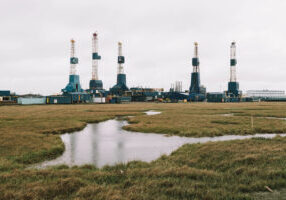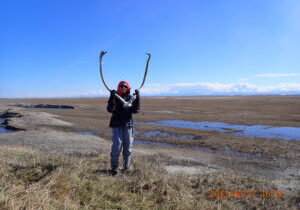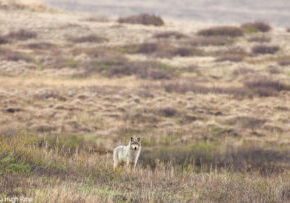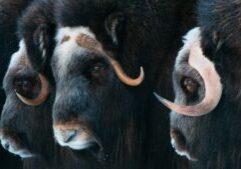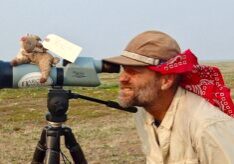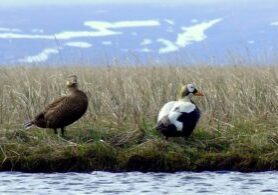THANK BIDEN FOR NEW ARCTIC PROTECTIONS!
Sign the petition to ensure better Arctic protections in years to come.
Photo Credit: Frida Lannerstrom
Alaska Wilderness League works to ensure that Alaska's wild landscapes endure to support vibrant communities and abundant wildlife for generations to come.
CHECK OUT OUR WILD ALASKA BLOG:
Biden Administration Secures Multiple Protections For Alaska
FOR IMMEDIATE RELEASE June 28, 2024 Contact: Anja Semanco | anja@alaskawild.org | 724-967-2777 Biden Administration Secures Multiple Protections For Alaska Washington D.C. – Today, the Biden administration announced a set of measures aimed at protecting millions of acres of Alaska, marking the next step toward securing prosperity for local Alaskan communities by preserving intact public lands and…
Read moreHouse Republican Majority Pushes Forward With Anti-Arctic Riders
FOR IMMEDIATE RELEASE June 27, 2024 Contact: Anja Semanco | anja@alaskawild.org | 724-967-2777 House Republican Majority Pushes Forward With Anti-Arctic Riders Pro-polluter appropriations bill threatens America’s Arctic Washington, D.C. – Alaska Wilderness League expresses profound disappointment at today’s House Appropriations release of an Interior appropriations bill. The bill reads like a wish list for big oil, packed with…
Read moreThere is no liminal space in the Arctic Summer
League supporter Thea Levkovitz found inspiration in her memories of an Arctic Refuge excursion, providing us with an artful depiction – through her eyes and heart – of her time there.
Read moreFrom Kristen Miller: Breakdown on Strengthened Protections for America’s Arctic
13 million acres of Special Areas receive expanded protections
Read moreBiden Finalizes Strengthened Conservation Protections for America’s Arctic
FOR IMMEDIATE RELEASE April 19, 2024 Contact: Anja Semanco | anja@alaskawild.org Biden Finalizes Strengthened Conservation Protections for America’s Arctic 13 million acres of Special Areas receive expanded protections Washington, D.C. – Today, the Biden administration released a final regulation to provide lasting protections for nearly 13 million acres of Special Areas in the National Petroleum Reserve-Alaska…
Read moreWhat to Know About the Ambler Road Project
In the heart of northern Alaska, the threat of a devastating development project has hung over wild landscapes for decades. The proposed Ambler Road would be a new, 211-mile industrial corridor on the south side of the Brooks Range, extending west from the Dalton Highway to the south bank of the Ambler River.
Read moreHome from the Range
An excerpt from Michael Engelhard’s new book, Arctic Traverse, highlighting the region of Alaska that would be impacted by the proposed Ambler Road.
Read moreSafeguarding Our Western Arctic: A Quick Journey Through Time
America’s Western Arctic – and in particular the National Petroleum Reserve-Alaska (Reserve) – is a landscape that catapulted to the forefront of public attention as the Willow project gained notoriety. Yet, the Reserve is more than just Willow; it’s a region of Alaska that Alaska Wilderness League has worked to protect for decades, and we’ve recently seen positive steps toward stronger protections.
Read morePEOPLE LIKE YOU KEEP PLACES LIKE THESE WILD:

ARCTIC NATIONAL WILDLIFE REFUGE
Protecting the coastal plain of the Arctic National Wildlife Refuge is crucial because of its exceptional wilderness, wildlife, habitat and subsistence values. It is sacred to the Gwich’in People and other Indigenous communities in Alaska and Canada, who rely on its resources for food, as well as cultural and spiritual practices. The 2017 Tax Cuts and Jobs Act (Tax Act) included a provision that opened the coastal plain to oil and gas development and mandated two lease sales by 2024. The Biden administration has revoked existing leases and we continue to work with the administration to restore protections to the Arctic Refuge coastal plain.
Photo credit: Micah Baird

NATIONAL PETROLEUM RESERVE-ALASKA
Development in the National Petroleum Reserve-Alaska in Alaska's western Arctic has begun, and ConocoPhillips' Willow project is the poster child for the type of massive fossil fuel development that must be avoided today if we’re to avoid the worst climate impacts down the road. Allowing oil drilling in and around the Teshekpuk Lake Special Area would also threaten an essential cultural area and food source for North Slope communities. Willow would significantly increase ConocoPhillips’ presence in the western Arctic while placing all the burden of development on the people and wildlife of the region.
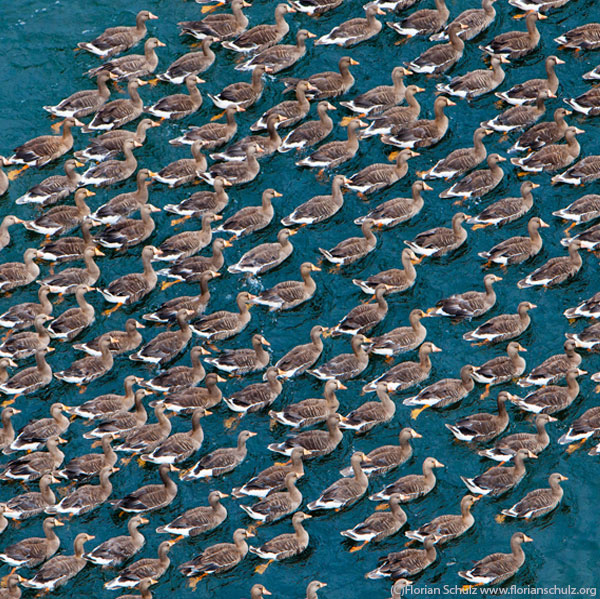

TONGASS NATIONAL FOREST
The Tongass National Forest serves as a nationally important carbon sink by storing more carbon than any other forest in the country. It is also the linchpin of Southeast Alaska’s economy, attracting people from around the world for world-class recreation, hunting, and sport and commercial salmon fishing. To protect this national treasure, the U.S. Department of Agriculture recently announced plans to restore protections to more than 9 million acres of roadless areas in the Tongass and end large-scale old-growth logging in America’s largest national forest.
Photo credit: Daniel Dietrich/DanielDietrichPhotography.com
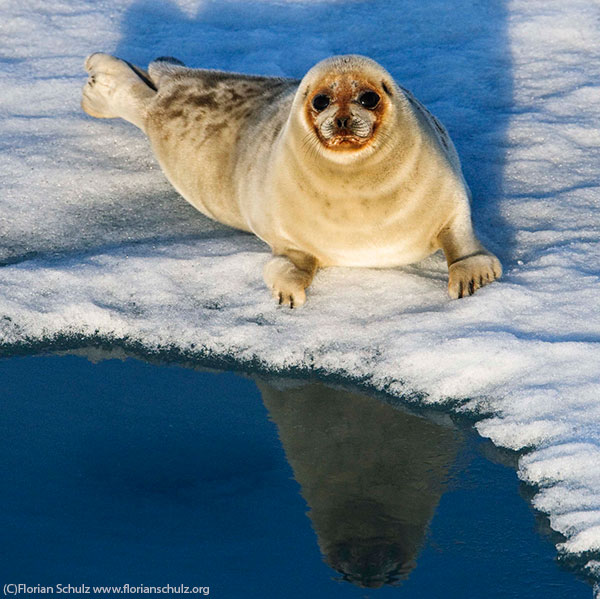
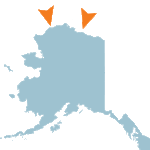
ARCTIC OCEAN: THE BEAUFORT AND CHUKCHI SEAS
The Beaufort, Chukchi and Northern Bering seas provide habitat for a variety of irreplaceable wildlife, are central to the life and food security for coastal communities, and play a key role in regulating the world’s climate. Offshore oil and gas activities create significant risk to this important and fragile ecosystem and the coastal communities that have depended on it for millennia. The remoteness and unique characteristics of the Arctic marine environment make resource extraction particularly difficult and dangerous, making new leasing unwise in Arctic waters.

CHUGACH NATIONAL FOREST
More than 1 million people visit the Chugach annually from all over the world; however, it is local Alaskans — especially in and around Anchorage — who really utilize what the Chugach has to offer. According to the U.S. Forest Service, the Chugach serves as the “backyard” for half of Alaska’s residents.
Photo credit: Debbie S. Miller
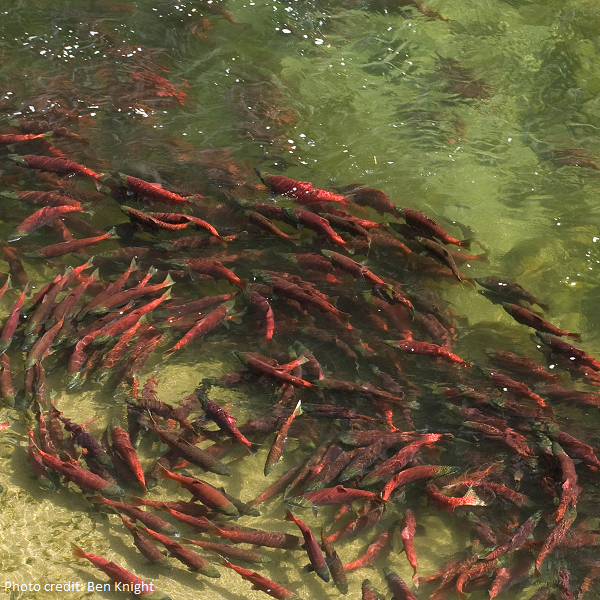
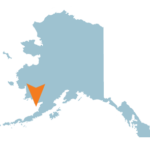
BRISTOL BAY
The U.S. Army Corps of Engineers announced it has denied a permit for the proposed Pebble Mine in Alaska, determining that “the applicant’s plan for the discharge of fill material does not comply with Clean Water Act guidelines” and concluding that “the proposed project is contrary to the public interest." The Bristol Bay watershed in southwest Alaska boasts the world’s largest sockeye salmon fishery that supports thousands of jobs. Alaskans and Bristol Bay’s Indigenous peoples, as well as hunters, anglers and wildlife enthusiasts from all across the country, spoke out in opposition to this ill-conceived project.


